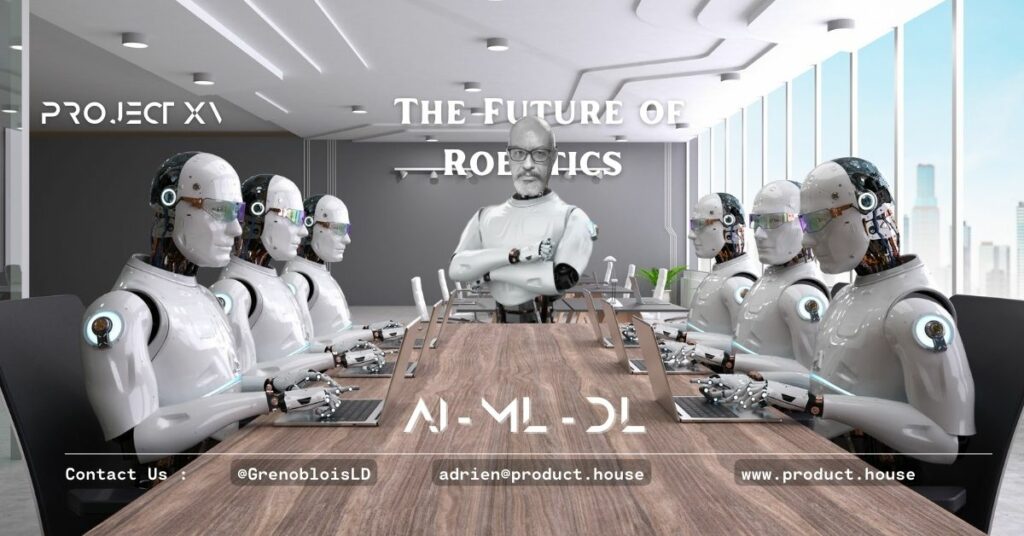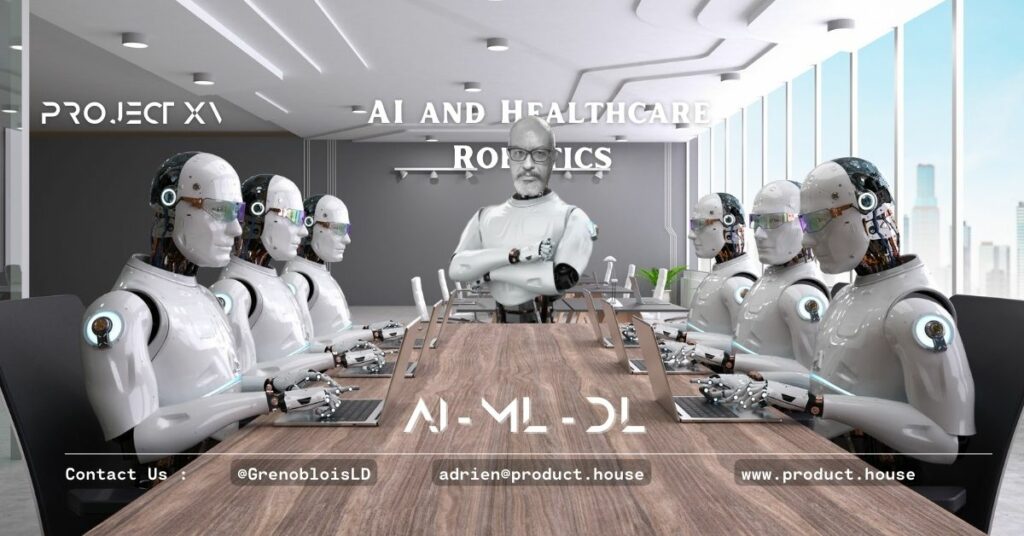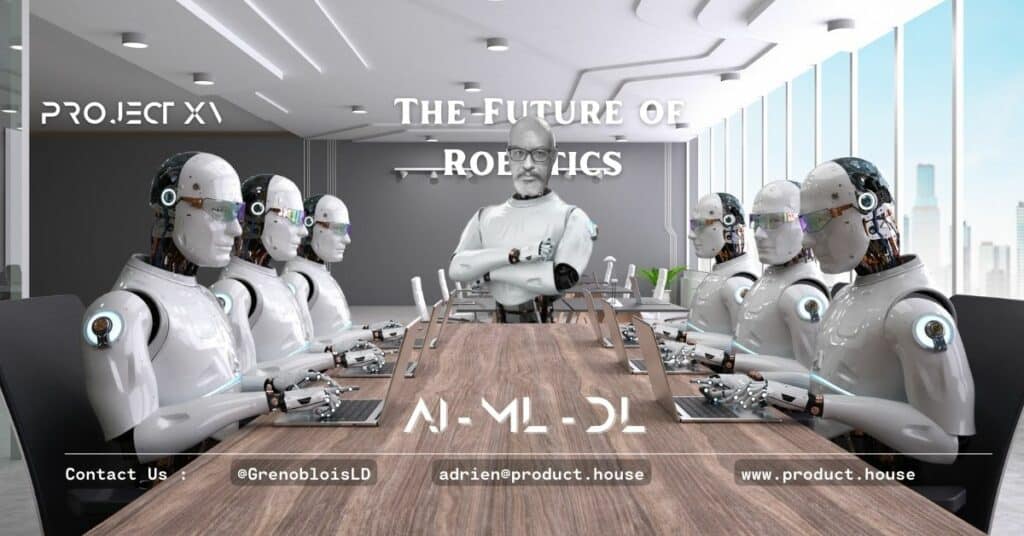AI and Manufacturing: How Robots Are Changing the Way We Make Things

Introduction:
Artificial intelligence (AI) has revolutionized the manufacturing industry by introducing robots that can perform tasks more efficiently, accurately, and safely than humans. AI-powered robots are being used in a variety of manufacturing settings, from assembling complex products to inspecting quality control.
In this article, we will explore the ways in which AI is transforming the manufacturing industry and the benefits and challenges of using AI in manufacturing.
The Rise of Robotics in Manufacturing:
The use of robots in manufacturing has been steadily increasing over the past few decades, with AI playing an increasingly important role. Today, robots are used in manufacturing for a variety of tasks such as assembly, painting, and packaging.
Benefits of AI in Manufacturing:
One of the key benefits of using AI in manufacturing is increased efficiency. Robots can work around the clock, without breaks, leading to increased productivity and output. Additionally, AI-powered robots can perform tasks more accurately and consistently than humans, leading to improved quality control and reduced waste.
Challenges of AI in Manufacturing:
While AI has the potential to transform manufacturing, there are also challenges associated with its use. One of the main challenges is the initial investment required to implement AI-powered robots in a manufacturing setting. Additionally, there is a potential for job displacement as robots replace human workers in certain tasks.
Real-World Examples of AI in Manufacturing:
There are numerous examples of AI being used in manufacturing today. For example, Amazon has implemented robots in their warehouses to assist with order fulfillment and inventory management. Ford has also implemented robots in their factories to perform tasks such as welding and painting.
The Future of AI in Manufacturing: The future of AI in manufacturing is promising, with the potential for even more advanced robots and AI-powered systems to be implemented. Additionally, as AI becomes more advanced, it has the potential to be used in more complex manufacturing tasks such as product design and optimization.
FAQs
- Will robots completely replace human workers in manufacturing?
While robots are increasingly being used in manufacturing, it is unlikely that they will completely replace human workers. There will always be tasks that require a human touch, and humans will be needed to design, program, and maintain the robots themselves. - Are there any ethical concerns around the use of AI and robots in manufacturing?
There are ethical concerns around the use of AI and robots in manufacturing, particularly around the impact on human workers. There is also a risk that robots could be used to automate processes that should not be automated, leading to job losses and other negative outcomes. - How can companies ensure that the use of AI and robots in manufacturing is ethical?
Companies can ensure that the use of AI and robots in manufacturing is ethical by putting in place policies and procedures to ensure that they are used in a responsible way. This includes ensuring that workers are trained to work alongside robots, and that they are not replaced by robots unnecessarily. - What are some of the benefits of using AI and robots in manufacturing?
The benefits of using AI and robots in manufacturing include increased efficiency, improved quality, and reduced costs. These technologies can also enable the development of new products and services. - How will the use of AI and robots in manufacturing change the job market?
The use of AI and robots in manufacturing is likely to change the job market, with some jobs being replaced by robots and others being created to design, program, and maintain the robots themselves. It is important for workers to develop new skills to adapt to these changes.
Resources:
- Robotics Business Review – a website providing news, analysis, and insights about robotics in business
- Automation World – a website providing news and insights about automation and manufacturing
- International Journal of Automation and Computing – a peer-reviewed journal covering topics related to automation and computing
- IEEE Robotics and Automation Society – a professional organization for robotics and automation engineers and researchers
Books:
- “Robots and Manufacturing Automation” by C. Ray Asfahl and Richard J. Koubek
- “Robotics and Control” by Robert D. Lorenz and Gordon D. Ross
- “Robotics: A Very Short Introduction” by Alan Winfield
- “Introduction to Autonomous Robots: Mechanics and Control” by Nikolaus Correll and Bradley Hayes
- “Robots and Manufacturing Automation” by C. Ray Asfahl and Richard J. Koubek: This book surveys the wide spectrum of automated systems available to improve manufacturing productivity, including robots, numerical control machines, programmable controllers, computer controllers and microprocessor-based automated systems. It covers topics such as product design, CAD, Karnaugh Maps and CIM. It also features industry case studies and problem sections.
- “Robotics and Control” by Robert D. Lorenz and Gordon D. Ross: This book provides a comprehensive introduction to the principles and applications of robotics and control systems. It covers topics such as kinematics, dynamics, sensors, actuators, feedback control, motion planning, trajectory generation, vision systems, force control and cooperative robotics. It also includes examples and exercises.
- “Robotics: A Very Short Introduction” by Alan Winfield: This book offers a concise overview of the history, present and future of robotics. It explains what robots are, how they work, what they can do and what they cannot do. It also discusses the ethical and social implications of robotics for humans and society.
- “Introduction to Autonomous Robots: Mechanics and Control” by Nikolaus Correll and Bradley Hayes: This book introduces the fundamentals of autonomous robots with an emphasis on mechanics and control. It covers topics such as robot modeling, kinematics, dynamics, motion planning, localization, mapping, navigation and manipulation.
Experts:
- Dr. Vijay Kumar, dean of the University of Pennsylvania’s School of Engineering and Applied Science
- Dr. Guang-Zhong Yang, director and co-founder of the Hamlyn Centre for Robotic Surgery at Imperial College London
- Dr. Henrik Christensen, director of the Institute for Robotics and Intelligent Machines at Georgia Tech
- Dr. Ruzena Bajcsy, professor of electrical engineering and computer science at the University of California
Dr. Vijay Kumar is an Indian roboticist and the Nemirovsky Family Dean of the School of Engineering and Applied Science at the University of Pennsylvania. He has been leading the school since 2015 and was recently reappointed for another term until 2027. He is an expert in robotics, especially in aerial robotics, swarm robotics, and cooperative control.
Dr. Guang-Zhong Yang is a Chinese roboticist and the founding dean of the Medical Robotics Institute at Shanghai Jiao Tong University. He was also the founding director and co-founder of the Hamlyn Centre for Robotic Surgery at Imperial College London. He is a pioneer in medical robotics, especially in surgical robotics, wearable sensors, and micro-nano robots.
Dr. Henrik I. Christensen is a Danish roboticist and the Qualcomm Chancellor’s Chair of Robot Systems and a Professor of Computer Science at UC San Diego. He is also the director of the Institute for Contextual Robotics at UC San Diego. He was previously the founding director of the Institute for Robotics and Intelligent Machines at Georgia Tech. His research focuses on systems integration, human-robot interaction, computer vision, and artificial intelligence.
Dr. Ruzena Bajcsy is a Slovak-American engineer and computer scientist who specializes in robotics. She is the NEC Distinguished Professor of Electrical Engineering and Computer Science at UC Berkeley, where she is also director emerita of CITRIS (the Center for Information Technology Research in the Interest of Society). She has made significant contributions to computer vision, artificial intelligence, and human-computer interaction.
Case Studies:
- Amazon’s Warehouse Robots – Amazon has implemented robots in their warehouses to assist with order fulfillment and inventory management. The robots navigate through the warehouse using a combination of sensors and cameras, picking up and moving items to their designated locations. This has led to increased efficiency and reduced errors in the order fulfillment process.
- Tesla’s Automated Manufacturing – Tesla has implemented a fully automated manufacturing process for their electric vehicles. The production line is powered by robots that perform tasks such as welding, painting, and assembly. This has led to increased efficiency and output, as well as improved safety for workers.
Glossary:
- Artificial Intelligence (AI) – the simulation of human intelligence in machines that are programmed to think and learn like humans
- Robotics – the design, construction, and operation of robots
- Automation – the use of technology to perform tasks without human intervention
- Quality Control – the process of ensuring that a product or service meets the desired level of quality
- Job Displacement – the displacement of human workers by machines or technology
Quiz Questions:
- What is the main benefit of using robots in manufacturing?
- What is the potential challenge associated with using AI in manufacturing?
- What real-world company has implemented robots in their warehouses for order fulfillment?
- What is the role of quality control in manufacturing?
- What is the potential impact of AI on job displacement in manufacturing?
- What is the difference between automation and robotics?
- What is the future potential for AI in manufacturing?
- What is the role of sensors in Amazon’s warehouse robots?
- What is the benefit of Tesla’s automated manufacturing process?
- What is the ethical consideration associated with job displacement in manufacturing?





